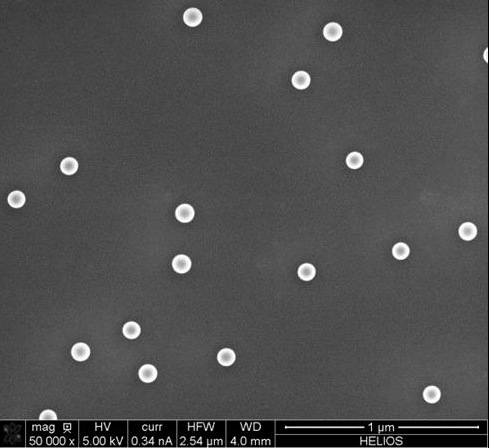
Reliable and reproducible characterisation of nanomaterials has become a key challenge to understanding nanomaterial biocompatibility, risk assessment and possible toxicity mechanisms. JRC scientists contributed to the assessment of the reproducibility of two popular nanoparticle characterisation techniques, dynamic light scattering and differential centrifugal sedimentation.
The QualityNano project is a pan-European infrastructure supported by the EU FP7 Research Programme. Its core aim was to create a scientific and technical space in which stakeholders could engage, develop and share best practices and innovation in the field of nanomaterials safety testing. Within this context, many collaborative initiatives were undertaken; all aimed at training and educating young scientists, and developing and disseminating measurement and quality assurance methodologies. An example of such initiative was the organisation of an Interlaboratory Comparison (ILC) study for nanoparticle size analysis which was coordinated by the French University Paris Saclay.
A total of 18 leading research organisations, including the JRC, participated in the ILC with Dynamic Light Scattering (DLS) and differential centrifugal sedimentation (DCS) techniques.
For the ILC study, representative test materials consisting of different types of monodisperse polystyrene and silica nanoparticles were analysed in various rounds. For the first round, no measurement guidelines were provided and laboratories were requested to analyse and report according to their own in-house procedures. In the second ILC round, samples were re-analysed, but this time, a common and detailed protocol was followed. During the third ILC round, the suitability of the measurement protocol was tested for nanoparticles dispersed in a complex physiological cell culture medium.
The results confirm that the availability of a common and sufficiently detailed measurement protocol is indispensable for interlaboratory method validation and standardisation tasks. In the absence of common guidelines and clear measurement instructions, seemingly logical terms, such as “particle size”, or the correct use of data algorithms, can be interpreted differently across laboratories.
Moreover, for more challenging types of samples, such as nanoparticles in cell culture medium, the study also demonstrated that a satisfactory reproducibility could be obtained by DLS, provided a well-developed measurement protocol is available.
Read more in: D. Langevin et al.: "Inter-laboratory comparison of nanoparticle size measurements using dynamic light scattering and differential centrifugal sedimentation”, NanoImpact 10 (2018) 97-107. Doi: 10.1016/j.impact.2017.12.004
Related Content
Details
- Publication date
- 4 June 2018
